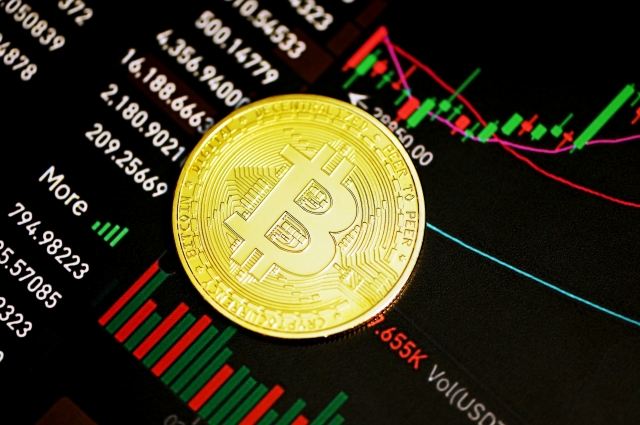Every four years or so, Bitcoin makes headlines for something that sounds dull on paper but moves markets in a very real way: the halving. It's not a software update or a flashy new feature—it's a built-in supply adjustment that quietly reshapes the economics of Bitcoin over time.
Many people track the Bitcoin price daily on sites such as Binance, Forbes and Bloomberg etc, watching it react to news, policy moves, or social media buzz. But behind the short-term swings, there's a more methodical engine at work: Bitcoin's predictable issuance schedule and its recurring halving cycles. These events don't always create instant spikes, but over time, they've helped define the peaks and troughs of each major crypto market cycle.
Let's dig into why supply—and more specifically, Bitcoin's approach to managing it—plays such a major role in determining value.
A Fixed Supply Model
One of Bitcoin's core design features is its limited supply: only 21 million coins will ever exist. Unlike fiat currencies that can be printed indefinitely, Bitcoin was created to mimic digital scarcity. That scarcity creates a foundational belief among many investors that, over time, its value should rise as demand grows and supply stays capped.
But it's not just about the hard limit. What's equally important is how new supply enters the market—and how that changes through halvings.
What Happens During a Halving?
Roughly every four years (or every 210,000 blocks), the reward given to Bitcoin miners is cut in half. When Bitcoin launched, miners earned 50 BTC per block. That dropped to 25 in 2012, 12.5 in 2016, 6.25 in 2020, and 3.125 in the most recent halving.
This scheduled reduction slows the rate at which new bitcoins enter circulation. It's like reducing the faucet flow into a glass—demand stays constant or rises, but the stream of new supply narrows. Over time, that supply pressure often leads to price appreciation.
It doesn't happen overnight, but the data from previous cycles is hard to ignore. Each halving has historically been followed by a significant bull run within 12–18 months.
Investor Psychology and Supply Expectations
Beyond the actual math, halvings impact perception. Investors often view these events as milestones—moments that reaffirm Bitcoin's predictable, self-regulating nature.
The anticipation leading up to a halving creates its own momentum. Traders begin positioning months in advance. Long-term holders dig in deeper. The idea of reduced issuance acts as a psychological trigger, reinforcing the scarcity narrative.
This collective behavior often results in a pre-halving run-up, followed by a post-halving correction, and then—if past is prologue—a gradual buildup to a new market cycle.
The Role of Miners and Sell Pressure
Miners play a key role in daily market dynamics. In proof-of-work systems like Bitcoin, miners are rewarded with new coins, which they often sell to cover operational costs.
When block rewards are cut in half, the amount of new BTC they can sell also decreases—assuming all else stays equal. This reduces consistent sell-side pressure in the market, which can help support upward price movement over time.
Historical Price Patterns Around Halvings
Let's look at the data. After the first halving in 2012, Bitcoin's price rose from around $12 to over $1,000 in the following year. The second halving, in 2016, preceded a run that took BTC to nearly $20,000 by the end of 2017. The third halving in 2020 laid the groundwork for the 2021 bull cycle, which peaked just under $70,000.
Each cycle had its own macro backdrop—ranging from tech adoption and media attention to COVID-era stimulus—but the common thread was a supply shock that eventually met rising demand.
Importantly, prices don't immediately explode after each halving. In some cases, there's a cooling-off period or consolidation phase before momentum builds. But over a long enough timeline, the impact has remained consistent.
Scarcity in the Broader Economic Context
Bitcoin's approach to supply control has made it attractive to investors looking for a hedge against inflation or monetary policy uncertainty. Unlike fiat currencies, where supply is dictated by central banks, Bitcoin's issuance schedule is baked into its code—and immune to political pressure.
In times of economic instability, this characteristic draws attention. It positions Bitcoin not just as a speculative asset, but as a potential alternative to traditional stores of value—especially in markets where fiat devaluation is a concern.
Limitations and Criticisms
Not everyone agrees that halvings are the main driver of Bitcoin's long-term price trajectory. Some argue that the supply curve is well known, and thus already “priced in.” Others suggest that macro conditions, technology adoption, and regulatory clarity play a larger role than supply alone.
There's also a question of diminishing impact. As the block reward continues to fall, each halving affects a smaller portion of the total supply. At some point, the event may carry more symbolic weight than actual economic consequence.
Still, the consistency of past price patterns suggests that halvings continue to play a strong role in shaping investor behavior—even if they're just one part of a larger puzzle.
Final Thoughts
Bitcoin's price may be volatile, but its supply isn't. That reliability—punctuated by the halving cycle—is one of the few constants in a market known for chaos. As the network matures, these moments of reduced issuance continue to shape how investors think, act, and value the asset.






